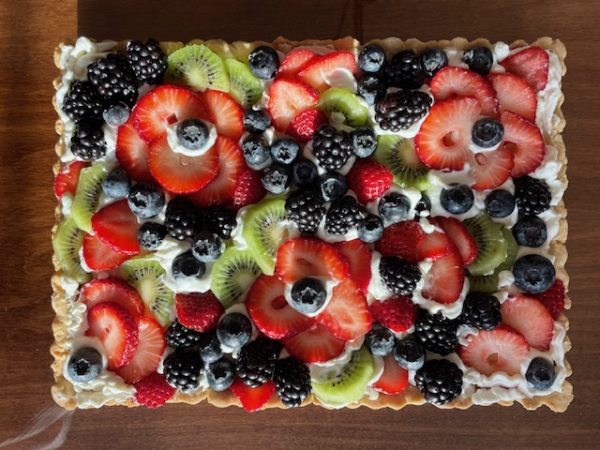Modesty: Dressing Up for Our Lord

December 4, 2017
It’s Sunday morning. You’re frantically going through your closet, trying to figure out what to wear.
Maybe this dress, or that skirt?
What about this polo and these slacks?
But…this dress is a little short…and I wore that skirt last Sunday. Do you think anyone will notice? The slacks are wrinkled…why not wear jeans?
Does this scenario sound familiar? I’m not sure about you, but I often struggle trying to pick out an outfit for Sunday Mass. But why? Why not just wear the typical everyday outfit, jeans and a T-shirt? It’d be simpler, and it’s not like jeans and T-shirts are immodest.
Sadly, there are many Catholics who believe this, who think that dressing up for Mass is unimportant. For me, dressing up and looking beautiful for Jesus is very important.
Of course, God will accept you however you come to Him, but we should dress up for Him if we have the means.
I conducted a poll on the MODG proboards and here are some of the responses I received concerning the importance of dressing up for Mass:
“God is interested in the hearts of his children. He doesn’t really care about what they look like on the outside as long as their hearts are in the right place. However, if in not dressing well, a man’s heart is not in the right place, God would desire that he dress well in order for his heart to be in the right place. Additionally, when we dress well for things, it shows those around us and ourselves that what we are dressing for is important.” ~Nathan M.
“Humans have both souls and bodies; one’s outward actions reflect one’s spiritual condition. Dressing well for Mass shows the respect one has for Jesus’ sacrifice and the love one has for Him.” ~Frances B.
Don’t we dress up for dates, weddings, parties, competitions, and to impress other people?
If we are willing to dress up for other people, should we not dress up for Our Lord and Savior? Should we not dress up for the most important aspect of our Faith, where we receive Christ fully present in the Eucharist?
In fact, if it is important to dress up for Our Lord on Sundays, then we should also dress up for Him every day we go to Mass.
Concerning this topic of modesty, Leah Darrow, ex-‘America’s Next Top Model’ contestant turned Catholic speaker, says:
“Although the Church has no dogmatic teaching on modest dress, it exhorts us to use common sense. If we are invited to a gala event, we don’t dress like we were invited to a beach party. Christ himself has invited us to partake in the sacred banquet of the Eucharist. Should not our attire and our reverent actions reflect where we are and who we are in the presence of? Reflect upon the Crucifixion; the invitation has been sent. Let us respond promptly and appropriately.”
And, just as it is important to dress up for Mass, it is also very important to dress modestly. Today’s definition of “modest” seems to be very blurred. In fact, opinions vary depending on who you talk to.
Does the Church give any definite guidelines for modesty? No, it does not. Darrow states:
“When you want to get down the heart of modest clothing it is best to remember that modesty is truly not about a hemline. It is something that inspires one’s heart to amend their whole lives to a greater level of purity. It does, however, take on a certain look.”
Looking to the Catechism, we find the following passages concerning modesty:
2521: Purity requires modesty, an integral part of temperance. Modesty protects the intimate center of the person. It means refusing to unveil what should remain hidden. It is ordered to chastity to whose sensitivity it bears witness. It guides how one looks at others and behaves toward them in conformity with the dignity of persons and their solidarity.
2522: Modesty protects the mystery of persons and their love. It encourages patience and moderation in loving relationships; it requires that the conditions for the definitive giving and commitment of man and woman to one another be fulfilled. Modesty is decency. It inspires one’s choice of clothing. It keeps silence or reserve where there is evident risk of unhealthy curiosity. It is discreet.
2523: There is a modesty of the feelings as well as of the body. It protests, for example, against the voyeuristic explorations of the human body in certain advertisements, or against the solicitations of certain media that go too far in the exhibition of intimate things. Modesty inspires a way of life which makes it possible to resist the allurements of fashion and the pressures of prevailing ideologies.
2524: The forms taken by modesty vary from one culture to another. Everywhere, however, modesty exists as an intuition of the spiritual dignity proper to man. It is born with the awakening consciousness of being a subject. Teaching modesty to children and adolescents means awakening in them respect for the human person.
I will add one more quote that sums up what modesty truly is:
“In the end, modesty means dressing in a way that conforms to our dignity as human persons and the respect due us because of it.
It means dressing in a way that does not bring inordinate attention to us, but rather dressing in a way that upholds our gender and adds beauty and form to the world.
It means dressing in a way that is appropriate to the occasion and our state of life in accordance with the age and the location in which we live.
It means dressing with moderation and temperance — wearing clothing that is not prurient nor prudish in its design — for virtue requires balance, as Father Stravinskas points out. And finally, modesty means dressing in a way that brings glory to our Creator and helps others to glorify Him, too. And in the end, that is our ultimate mission in all things, including what we wear.”
~Johnnette S. Benkovic
I would like to add a few tips that have helped me personally discern whether something is immodest:
- Does the shirt or dress show any cleavage? What about when you bend over? If so, adding a cami or tank can sometimes solve this problem!
- Can you see through the shirt or dress? Adding a cute cami or tank top will also eliminate that problem!
- Is it tight or form fitting? Does it accentuate curves that it shouldn’t? I try to avoid tops, dresses, skirts, or pants that do so. They are often uncomfortable, as well!
- A rule generally used for length of shorts and skirts is to make sure they are longer than where the ends of your fingertips reach when your arms are stretched at your sides.
- Leggings (worn as pants), spaghetti straps, bikinis, mini skirts, and short shorts are a no go for me.
- As a general rule I keep my dresses and skirts at or just above the knee. If they are a little shorter, adding leggings is a great solution!
- If you’re constantly having to pull your dress or shirt up, or your dress or skirt down, etc. then it probably isn’t the most modest. If you feel awkward or uncomfortable wearing something, most likely it is immodest. Being modest should be comfortable!
Keep in mind that these are just general guidelines I typically go by. Maybe yours are stricter or less so. Maybe for you jeans and shorts aren’t modest. It is not wrong to think so.
These aren’t the rules you have to go by, but I’d suggest taking a look at them and considering your thoughts on modesty. Feel free to do more research if you’d like. Keep in mind that you are a Child of God and your body is a Temple of the Holy Spirit!
In conclusion, when you try on a new outfit and look in the mirror, try using this rule of thumb: if you can’t tell whether something is too short, low, tight, transparent, or all of the above: chances are, it probably is.
However, modesty differs depending on size, as we are all different. Therefore, it is important to consider how you can best uphold your dignity, purity, and beauty as God’s child through what you wear.
Remember: modesty doesn’t apply just to girls, but also to guys. It doesn’t apply only to dress, but also to how you act and talk!






Sam Herbison • Dec 5, 2017 at 2:40 pm
Thank-You for addressing this topic! So often today we have to avert our eyes due to the impure dress of today.
Modesty also applies for guys is right. At my parish, the priest who runs the Altar Boy Guild there always tells us that. Some examples of modesty for men are sitting up strait, speaking correct grammar, and all other basic rules of politeness.